Explore: The 9 Critical Free-Weight Exercises • The Purposeful Primitive Workout • Pick Your Training Schedule • The 6 Tenets of Effective Weightlifting • The Primal Menu
Primordial Man was lean, muscular and tough as nails. His very life depended on his ability to fight or flee in an instant, and every day he had to stalk and kill animals with spears, knives, snares, rocks and arrows.
The ancient combination of a very simple, seasonal diet (made up primarily of proteins and fibrous carbs — meaning nonstarchy veggies) and vigorous, intense daily activity created a phenomenally functional physique, one most of us are hard-pressed to replicate today.
Part of the problem is that we are awash in a sea of modern complexity and contradiction. One trendy fitness approach contradicts another trendy fitness approach; one sensationalized diet plan claims incredible results, yet is precisely the opposite of another sensationalized diet plan, both of which present powerfully persuasive arguments and (pseudo) science to back up their claims.
All these schools of thought present compelling arguments and trot out adherents who tell you how this or that revolutionary system transformed their physiques in no time flat with a minimum amount of effort and expense.
If what you want is optimal, sustainable results, you need a back-to-basics primitive fitness strategy combined with enough discipline, focus and tenacity to pull it off.
Meanwhile, most modern-day people — who have full time (mostly sedentary) jobs and countless other demands on their time — are struggling just to stay in decent shape. Often, they go to the trouble of fitting in time-consuming workouts only to find these workouts aren’t making the difference they had hoped for. Week after week, they slog to the gym, and while they might see results at first, they almost always wind up plateaued or burned out far before they feel satisfied with their fitness gains.
In truth, any fitness-training regimen will produce relatively dramatic results in an untrained individual — for a while. But most of the fuss and nonsense that passes for fitness training these days is, in my view, a waste of time. If what you want is optimal, sustainable results, you need a back-to-basics primitive fitness strategy combined with enough discipline, focus and tenacity to pull it off.
During your following scroll, I share elements of my Purposefully Primitive resistance-training workout. It’s not fussy or fancy: It’s designed to tap directly into your body’s primordial instincts by mimicking the functional fitness demands our ancestors encountered daily. When combined with similarly primitive cardio and nutritional strategies (both of which I cover in my book) — it will produce intense, no-nonsense results.
Back to Basics
All the essential biological circuitry required to attain and sustain a truly extraordinary level of fitness is already hard-wired into the body you have. Your physiology is just waiting for the right catalysts to trigger that transformation.
The human body is subject to certain biological imperatives, meaning: Do X, and Y will happen. Scientifically speaking, if a muscle — any muscle — is subjected to a specific resistance protocol of sufficient intensity, the target muscle must grow stronger — as long as that muscle is then adequately fed and rested.
This is cause and effect at its simplest and most primitive: Enact the right training and eating procedures and the human body must grow new muscle and burn stored fat. The human body has no choice in the matter. It has been operating according to these rules since time immemorial.
Clearly, we no longer live under the fitness-triggering circumstances our fit ancestors did. But we are not at the mercy of our current environment. There are certain resistance-training protocols that take full advantage of our built-in biological imperatives — protocols that have been proven over many decades to bring out the best and strongest in the human body.
Similarly, there are certain forms of cardiovascular exercise and certain nutritional approaches that have been proven to accelerate the oxidation of stored body fat while promoting optimal recovery, healing and muscle growth.
Put the right biological triggers in place, and your body will reclaim its natural strength and vitality.
These systems work because they are rooted in basic biology: Put the right biological triggers in place, and your body will reclaim its natural strength and vitality.
In order to replicate Primordial Man’s remarkable level of fitness, we must combine heavy resistance training with intense cardio exercise, fuel the exercise regimen with ample amounts of lean protein and fibrous carbohydrates, and recalibrate the mind to embrace a new fitness reality.
I cover all these elements in my book, but strength training is key, so that’s what I’m focusing on here.
Every new pound of muscle you build requires 30 to 40 additional calories per day to survive. Ten pounds of new muscle, in other words, will burn off 400 additional calories per day, the caloric equivalent of a 40-minute cardio session. The following lifts are the most effective ones I know for building and strengthening muscles. Do them, and watch your body shape-shift into its primitive fitness glory.
The 9 Critical Free-Weight Exercises
Building muscle and strength doesn’t require a lot of newfangled equipment.
Truth be told, just nine basic free-weight exercises can and will deliver all the results you can expect from a progressive resistance routine. These key lifts — or close variations — form the structural backbone of every effective resistance program.
You need only a barbell, dumbbells, a sturdy exercise bench that inclines and a squat rack. (You can build upon these nine with a half-dozen additional exercise variations; for that list, consult my book.)
In The Purposeful Primitive, I divide nine key exercises into three tiers:
- On the top tier are the three most important free-weight exercises: the squat, bench press and deadlift.
- The second tier includes the overhead press, curl and triceps press.
- The third tier contains the Romanian deadlift, single-leg calf raise and abdominal exercises.
These exercises and their many variations (not pictured here) provide an infinite number of training possibilities and a lifetime of study. If you want to get strong and fit the simple way, this is the way to start.
The Purposeful Primitive Workout
First Tier Exercises
1) Barbell Squat
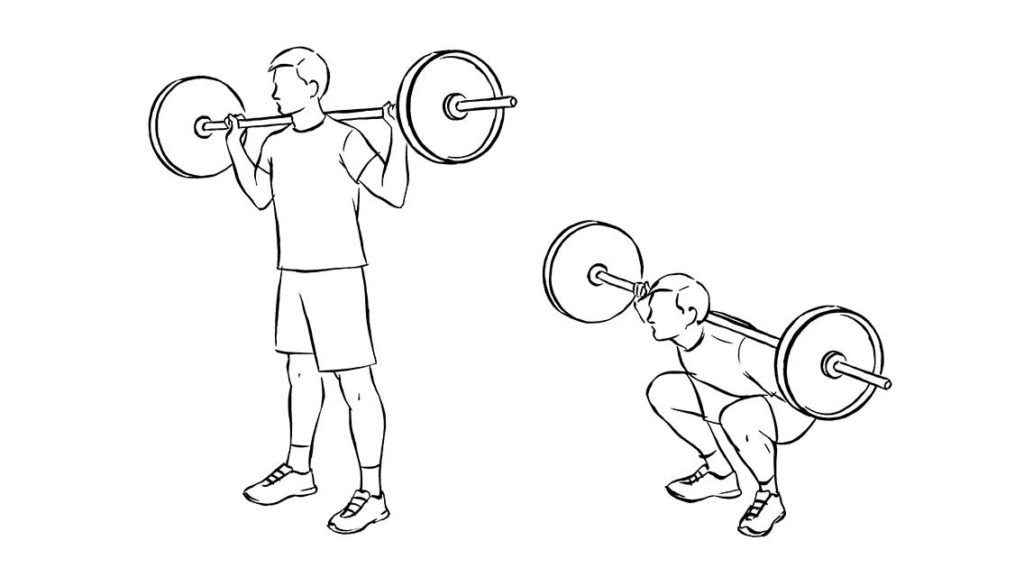
(a) Assume a shoulder-width stance with the bar high on the back of your shoulders, inhale, break from the knees and push the butt backward. Keep your knees over your ankles as you descend and ascend, and maintain a straight, upright torso.
(b) Slowly squat down as deep as you can without joint discomfort, then raise back up into a standing position. Repeat. Don’t allow your hips to rise up to get a squat moving, and don’t lean forward as you rise — your butt must stay under your torso.
Squat variations: body-weight squat, plate squat, front squat (see “How to Mix Up the Barbell Back Squat” for more variations.)
2) Barbell Bench Press
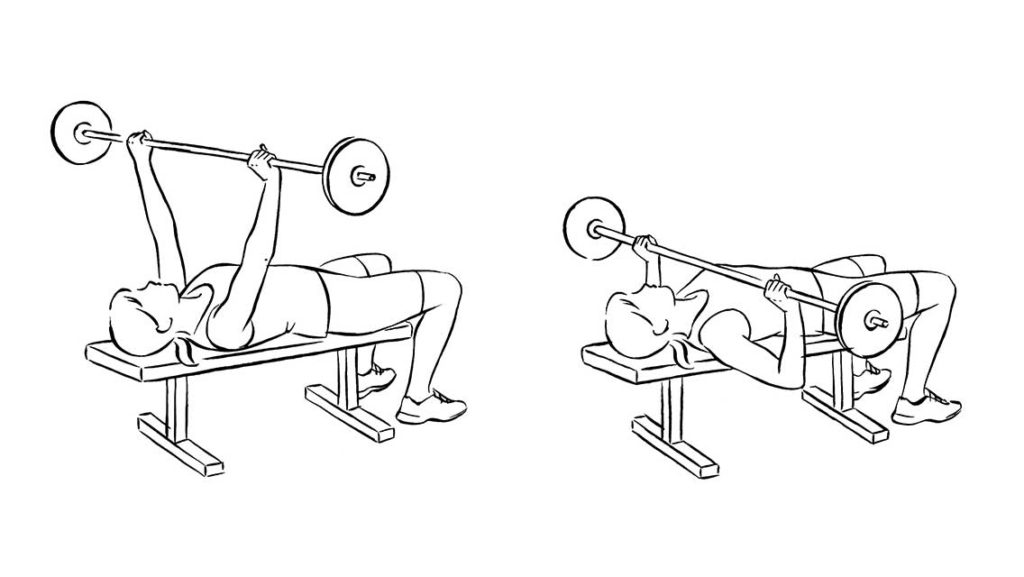
(a) Lying flat on an exercise bench, grasp a loaded barbell with hands shoulder-width apart. Slowly lower the weight to your chest, just below the pectoral muscles.
(b) Inhale on the descent and pause at the bottom, when the barbell is just above your chest. Exhale, pushing explosively. Vary your grip during different workouts; the wider the grip, the more the exercise stresses the pecs, while a close grip stresses the triceps more.
Bench-press variations: incline free-weight bench press, dumbbell bench press, narrow-grip bench press, wide-grip bench press (see “How to Do the Bench Press” for additional form tips and variations.)
3) Barbell DeadLift

(a) Stand over the top of a loaded barbell. Looking down, you should be able to see your toes under the bar. There should be 8 to 15 inches between your heels. Tense every muscle in your back, and keep your spine rigid as you squat down and backward until you can grasp the barbell with a shoulder-width grip. Look up.
(b) Positioning your shoulders directly over the bar, use leg power alone to lift the weight from the floor, making sure the bar travels up vertically, staying in continual contact with the shins and thighs before achieving lockout. Lower the bar without losing any muscular tension, and quietly touch the weights to the floor before reversing direction to begin the next rep. Never allow the butt to rise up first as you start a rep — keep your butt under your torso and your shoulders over the bar.
Deadlift variation: sumo deadlift
Second Tier Exercises
4) Overhead Press

(a) Stand with feet shoulder-width apart, a dumbbell in each hand. Begin with the dumbbells just below ear level, palms forward. Press both dumbbells straight overhead as explosively as you can while keeping your feet grounded. Activate your abdominal muscles to maintain neutral posture and lower-spine stability.
(b) Pause briefly at the top, locking out your arms overhead for at least one second, and then return slowly to the start position. Try also the barbell press and the behind-the-neck press; each can be done with various grips. (See “How to Do the Overhead Press” for more variation ideas.)
5) Biceps Curl
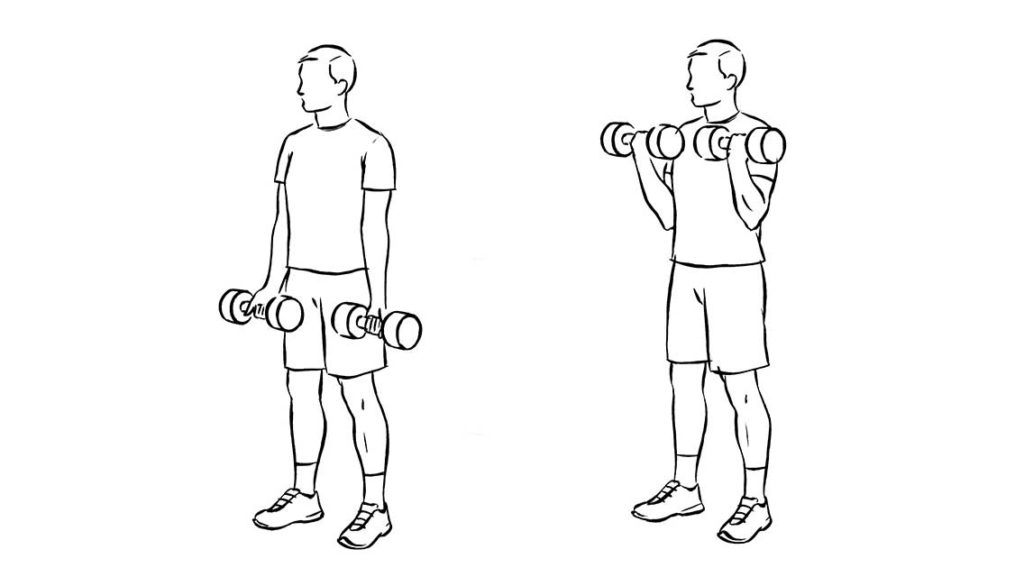
(a) Keep the elbows tucked at your sides, regardless of what curl variation you select — otherwise you turn curls, a terrific biceps exercise, into a half-hearted shoulder exercise. Standing, keep your back straight and take an underhand grip on the dumbbells with your hands slightly wider than shoulder-width apart.
(b) Inhale, then curl the dumbbells in one smooth, quick movement while keeping your back straight (contract your butt, abs and back muscles to keep yourself from swinging) and your elbows down. Use dumbbells or a barbell, and try out preacher curls or other upper-arm immobilizing variations.
6) Triceps Extension
You can do triceps extensions seated, standing or lying down, with one or two dumbbells, or a single barbell. Here we picture the standing single-dumbbell version.

(a) Using a very narrow 4- to 6-inch overhand grip, palms facing up, push a light dumbbell upward until the weight is directly overhead.
(b) Pause at the top and lower the weight until the triceps are stretched. When the weight has bottomed out, push upward and don’t allow the upper arms to shift or sway — use triceps power alone.
Third Tier Exercises
7) Sumo Romanian DeadLift
The Romanian deadlift is traditionally done while holding a barbell, while our version is done holding a weight plate.
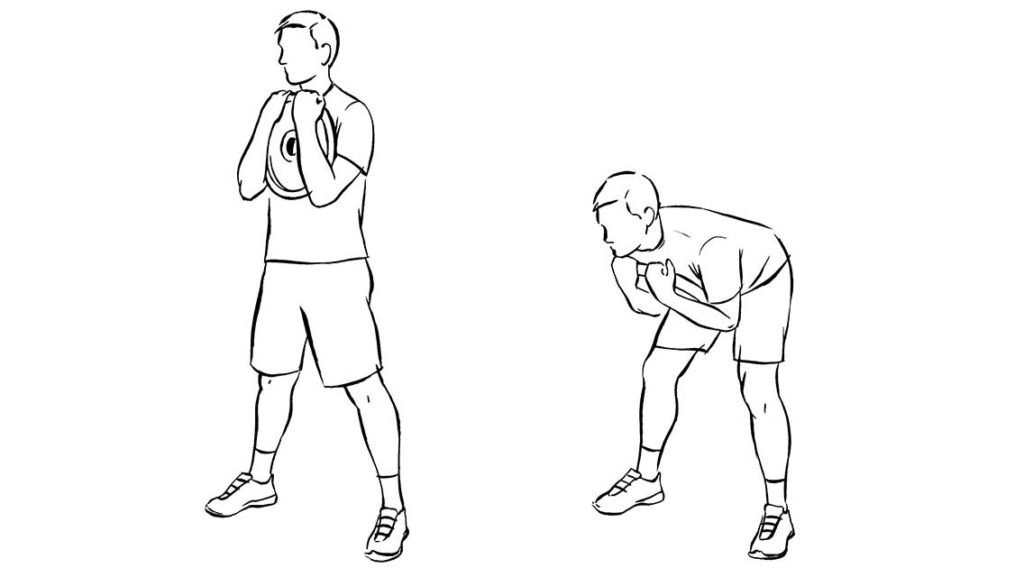
(a) Standing upright, hold a weight plate of your choice against your chest.
(b) Break forward at the hip joint while maintaining a natural arch in your back. Lean forward, descending slowly and allowing the weight to pull your torso downward. At the lowest point, exhale all remaining air (ideally allowing for another 3 to 6 inches of descent). Rise up very, very slowly, using hamstring power alone to stand upright.
8) Single-Leg Calf Raise

(a) Start by standing on the ball of your left foot, your heel hanging off a step and a dumbbell in your left hand.
(b) Begin each rep with your heel dropped down as far as it will go, and slowly raise and lower your heel through full range of motion. Periodically alter toe positions: toes pointed in, toes pointed out, and toes pointing straight ahead. High reps work best for calves; beginners should start with two to three sets of 15 reps on each leg followed by a 30-rep “burnout set” using both legs.
9) Decline Sit-Up
You can choose from a variety of core exercises, but the decline sit-up is always a good option.
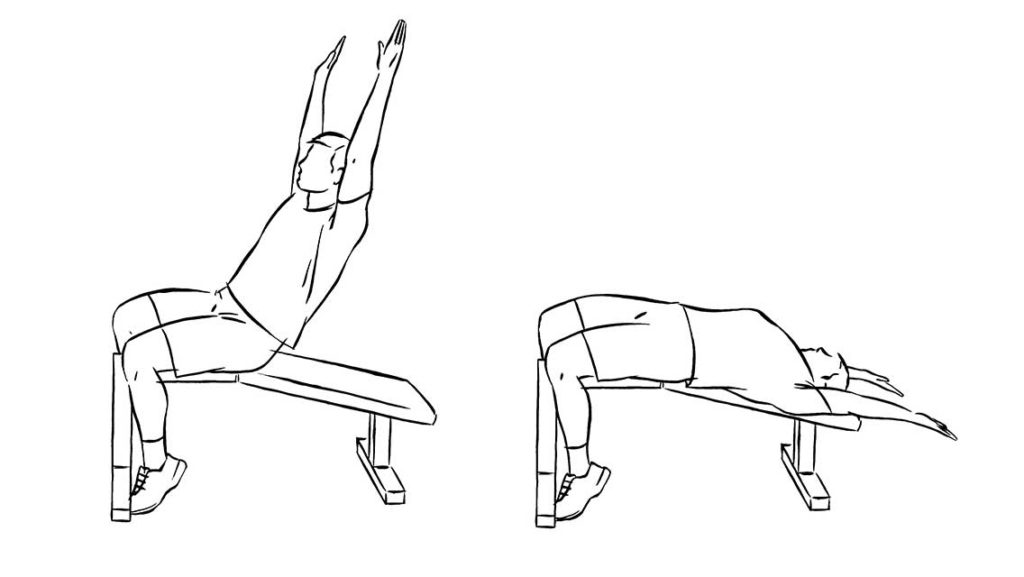
(a) Start by lying back on a decline bench, arms up with your elbows by your ears, until the back of your head touches the pad.
(b) Slowly roll upward, one vertebra at a time, until you are sitting nearly upright. (Keep your arms by your ears the entire time.) The first third of the exercise will be the toughest, but avoid the natural tendency to press with your feet — this takes the emphasis off the abs and onto the thighs. Start with two to three sets of eight to 12 reps. Try super-slo-mo sets to make the exercise even more difficult, or insert a twist to blast the obliques. (For more ideas, see “5 Essential Core Exercises” and “6 Dynamic Core Training Exercises.”)
Pick Your Optimal Training Schedule
When assembling an ideal resistance-training regimen, a great deal depends on the amount of training time you have available. Too often, people feel that having only a few days a week isn’t enough to trigger progress, but it is.
You don’t have to lift six days a week to see results, you just have to be consistent. Take an honest look at how much time you’ll be able to devote to your program and select an appropriate training template from the options that follow. (For tips on assessing your current situation, see “The Can-Do Fitness Plan”.)
Too often, people feel that having only a few days a week isn’t enough to trigger progress, but it is.
Once you’re ready to go, start off light and easy — under maximum work capacity at first — and then work up from there, so that your body acclimates to the workload. (One common rookie mistake is to start too heavy and burn out.)
2-Day-a-Week Training:
Simple, time-efficient, deadly effective!
This template for bare-minimum lifting is super-simple and ideal for beginners:
- Perform the three Tier 1 exercises (squat, bench press, deadlift) or their close variations
- Execute 3 sets of 10 repetitions for each move.
- Perform twice weekly.
- Follow your workout by at least two days’ rest, and another session followed by three days’ rest.
Because the program is so simple, however (each workout lasts only around 30 minutes), you must perform it with intensity.
A good rule of thumb on the first set is to use 50 percent of the final poundage. (Thus, if you intend to end with 100 pounds, do set one at 50 pounds and set two at 75 pounds.)
Concentrate on ingraining proper technique.
3-Day-a-Week Training:
Work the whole body thrice weekly! You can blast your body from head to toe in the same session three times a week.
This routine works well for athletes because it allows plenty of time for other activities — though you’ll need a couple of days to recover from this tough workout!
During this three-day-a-week routine, you’ll add Tier 2 exercises to the existing menu of Tier 1 exercises.
Note: If you don’t feel blasted afterward, you’re not exerting enough energy.
Each workout should last from 45 to 75 minutes, depending on how many exercise variations you use (i.e., mix up your grip and exercise equipment from workout to workout).
- Day 1: Squat, bench press, deadlift, overhead press, biceps curls, triceps extension
- Day 2: Squat, bench press, Sumo Romanian deadlift, overhead press, biceps curls, triceps extension
- Day 3: Squat, bench press, deadlift, overhead press, biceps curls, triceps extension
Beginners to intermediate lifters: 3 sets of 8 repetitions of each move.
More advanced weightlifters: periodize progress and go for 8 reps in weeks one through four, 5 reps in weeks five through eight, and 3 reps in weeks nine through 12.
4-Day-a-Week Training:
Ground-up split routine. If you engage in serious progressive resistance for long enough, you’ll become markedly stronger. And, when your strength reaches a certain level, a whole-body routine can reach a point of diminishing returns (as your weights increase, it becomes difficult to keep your number of repetitions up toward the end of your workout). Thus, recovery becomes more important — it takes muscle a longer period of time to recover from heavier weights than it does from light weights — and it makes more sense to split your routine into different body parts.
In this version, exercise variation becomes crucial. If you can get to the gym four times a week for 60 minutes, you can realize incredible strength gains.
Note: This is not a beginner’s workout; periodize your sets and reps.
- Day 1: (Leg Day): Squat, squat variation (such as front squat), Romanian deadlift, standing calf raise
- Day 2: (Chest and Triceps): Bench press, bench-press variation (suggestion: close grip), a third bench-press variation (suggestion: wide grip), your choice of additional chest exercise, triceps extension or additional triceps exercise off: Rest for a day in the middle of the split
- Day 3: (Back and Biceps): Deadlift, pulling exercise (suggestion: rows), biceps-curls variation 1, biceps-curls variation 2
- Day 4: (Shoulders and Abs): Overhead press, overhead- press variation (suggestion: behind the neck), your choice of shoulder exercise or decline sit-up
- Off: Two days off, then start the routine again
5-Day-a-Week Training:
Iron immersion. With this plan, you focus on a single body part or lift per day for five days in a row. You focus your attention on doing a high number of sets of the same exercise. It’s pure power perfection — just be sure to work to exhaustion and don’t skimp on full range of motion. This workout can take just 20 minutes if you really get after it.
- Day 1: (Quads): Squat (any variation); do up to 10 sets, maximum of 3 to 5 reps each
- Day 2: (Chest): Bench press (any variation); do up to 10 sets, maximum of 3 to 5 reps reps each
- Day 3: (Back): Deadlifts (any variation); do up to 10 sets, maximum of 3 to 5 reps each
- Day 4: (Shoulders): Overhead press (any variation); do up to 10 sets, maximum of 3 to 5 reps reps each
- Day 5: (Leftovers): Biceps curls, triceps extensions, single-leg calf raises, decline sit-up; superset these exercises (pair biceps with triceps and calves with sit-ups, resting only after you’ve completed a set of each pair)
- Off: Two days off, then begin again
6-Day-a-Week Training:
Volume over intensity. Some people love to weight train. They have the time and the circumstances that allow them to train often, and they may be psychologically adapted to do more, but not do it as hard. So, with this program, you get lots of exercise, lots of sets, high reps and a fast pace. Each workout should take 60 to 80 minutes.
- Day 1: Chest, triceps, upper back (any and all variations)
- Day 2: Quads, hamstrings, shoulders
- Day 3: Lower back, biceps, forearms
- Day 4: Repeat Day 1 using different exercises
- Day 5: Repeat Day 2 using different exercises
- Day 6: Repeat Day 3 using different exercises
- Off: One day off and begin again
Generally speaking, most exercise and diet routines lose effectiveness after four to six weeks — that’s why periodization is necessary. The more training cycles you have under your belt, the better you’ll be at identifying stagnation. (But don’t change things up every week — three to four weeks is the absolute minimum you should stay on a selected course.) While anyone can design an initially effective program, the real secret to prolonged success is working with the natural ebb and flow of your body.
The 6 Tenets of Effective Weightlifting
- Use free weights to near exclusion. The very rawness of hoisting barbells and dumbbells is what makes them so effective for muscle and strength building. When it comes to triggering primitive fitness gains (including increased power, plus neurological balance-building effects), smooth and efficient is not nearly as effective as crude and difficult. So stick with free weights.
- Center sessions around core, compound multijoint exercises. Large, sweeping exercises allow individual muscles to exceed individual capacity; their neighbors pitch in to help. Performing an isolation movement prior to performing the compound multijoint exercise sabotages strength available for the multijoint movement. Perform isolation exercises after multijoint exercises.
- Make sessions intense. In order for muscle growth to occur and muscle strength to increase, the targeted muscle must be stressed in some manner or fashion. Unless some element of stress is present, the adaptive response will not be triggered. Muscle fiber does not thicken and strengthen in response to submaximal effort.
- Keep sessions short. If you work hard enough to trip the adaptive response, muscles become traumatized and fatigued. Even the athletic elite recognize that after an hour or so of intense training, a point of diminishing returns sets in and further training is not only fruitless but counterproductive.
- Rest and recover. Shocked and traumatized muscles need to be rested and refueled before training them again. When a muscle is trained properly, muscle fibers are torn down. To subject that muscle to intense stress before it has recovered from the initial pounding is counterproductive and disruptive to the adaptation cycle. Rest is critical. So is good nutrition.
- Seek technical proficiency in all exercises. Concentrate on rep speed, length of stroke, and attention to technical execution prior to and during each and every set. Get tips from a professional if you can. Strive to refine your technique over time.
The Primal Menu
From the dawn of humanity until its evolutionary apex, people worldwide consumed the same foods: lean protein and wild fruits and vegetables. The protein was uniformly lean and the carbohydrates overwhelmingly fibrous. A primordial “replication diet” would consist of eating lots of lean protein and lots of fibrous fruits and vegetables and not much else — perhaps some nuts and seeds, a bit of starchy carbs, a limited amount of natural sugars and saturated animal fat.
To stay true to primal man’s diet today would require that we consume organically raised, seasonally appropriate foods selected from a very limited menu. The bad news is a primal diet confines you to a narrow food selection. The good news is you can eat lots of these foods, eat often, and still lose body fat. Competitive bodybuilders have confirmed the primal food/fuel thesis: The goal of the bodybuilder is to create maximum muscle mass while simultaneously reducing body fat down to single digit percentiles.
Top bodybuilders will routinely reduce down to 5 percent (or less) body fat percentiles while maintaining tremendous muscle mass. And a procedural dietary consensus has emerged on how best to accomplish this: Since the 1970s, bodybuilders have universally agreed that eating lean protein and a diet high in fiber is the single most effective way to maintain maximum muscularity while becoming as lean as humanly possible. The most effective bodybuilding dietary template ever invented replicates almost exactly the dietary template of primordial man.
This article has been updated. It originally appeared in the June 2009 issue of Experience Life.
Reprinted with permission from The Purposeful Primitive.
Marty Gallagher is an world-renowned athlete and respected fitness journalist. A three-time World Master Powerlifting Champion, he coached the United States team to victory at the World Powerlifting Championships in 1991. Over the last 30 years Gallagher has published over 1,000 articles in two dozen fitness publications. He also writes a highly acclaimed weekly Live Online column for Washingtonpost.com. This article is adapted and excerpted from Gallagher’s book, The Purposeful Primitive: Using the Primordial Laws of Fitness to Trigger Inevitable, Lasting and Dramatic Physical Change. The book presents Gallagher’s integrated fitness philosophy, along with his proven training, nutrition and mind-body protocols for achieving an optimal level of strength, endurance and vitality.
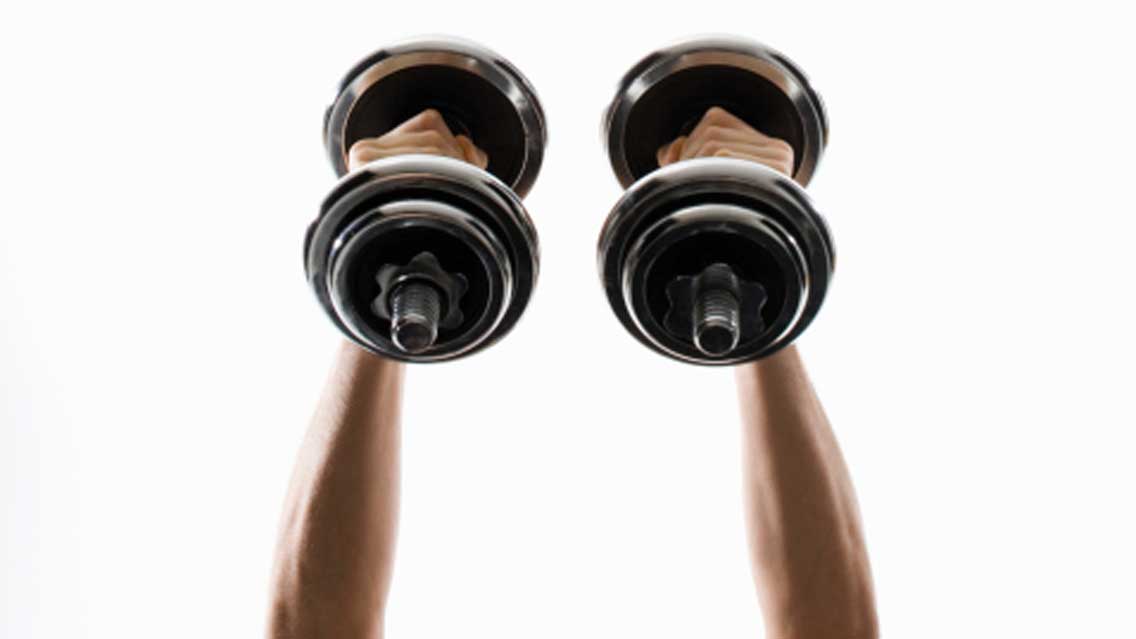
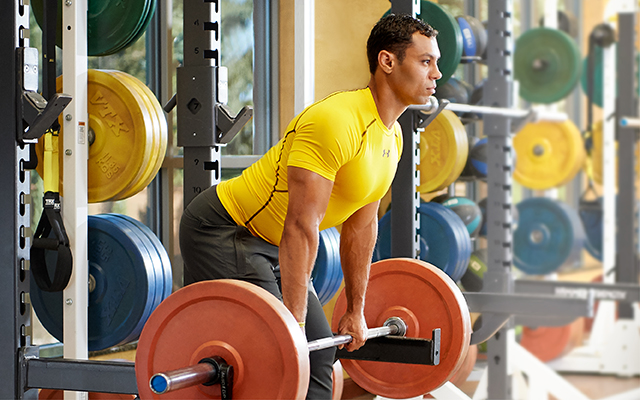


This Post Has 0 Comments